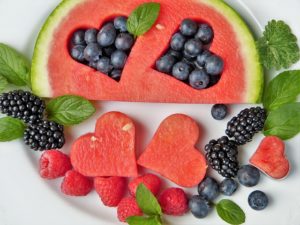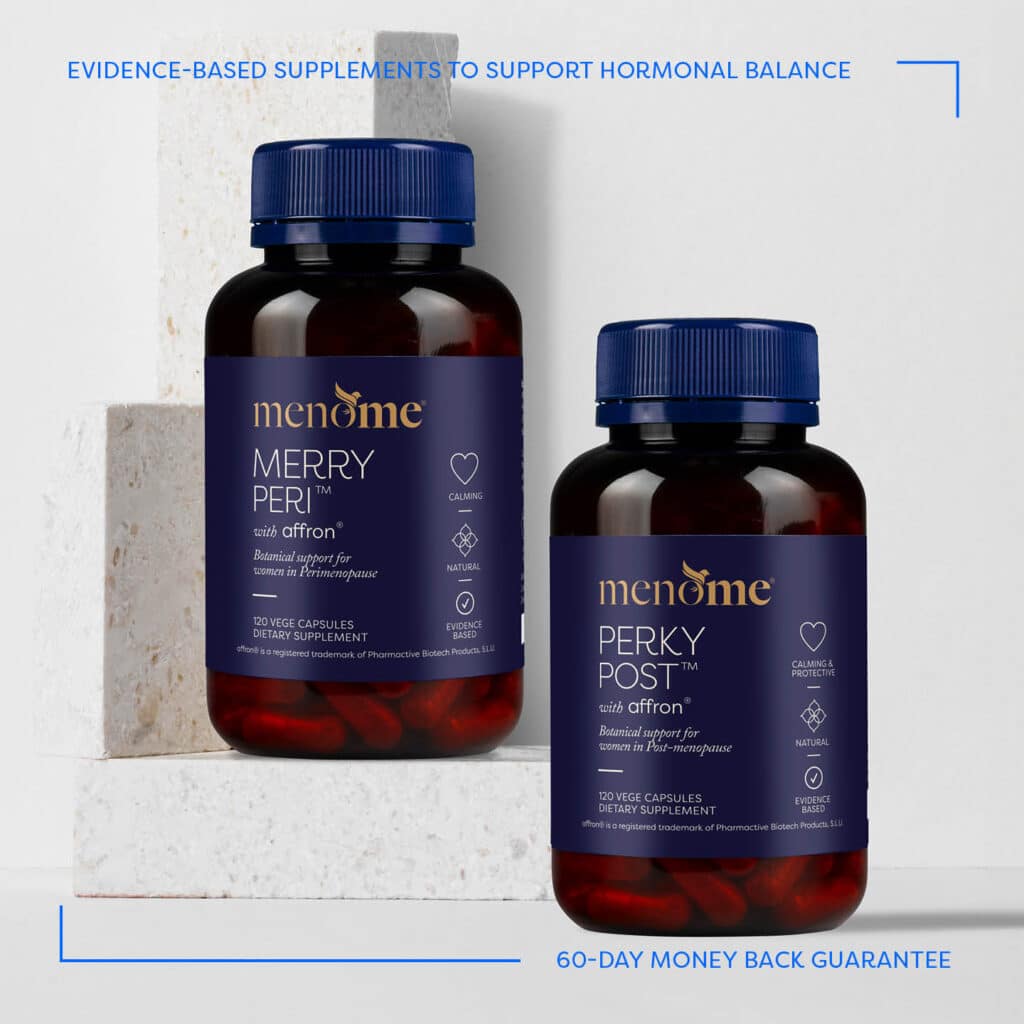Six foods to help balance your hormones? Does it sound too good to be true? Indeed, peri/menopause is all about our reproductive hormones. And the food we eat can have a significant effect on hormonal equilibrium. Which is magic!
As our fertility declines so do our estrogen and progesterone levels. As a result, hot flushes, weight gain, moodiness, bladder weakness, itchy, dry skin and so much more can raise their heads. However, the foods we choose to eat can provide some support.
Foods to help balance hormones?
When it comes to managing your peri/menopausal journey looking at your diet and lifestyle choices is key. While we have Merry Peri® and Perky Post® to support the effects of hormones on your body; adding hormone supporting foods makes sense too. What’s more, throwing out the foods that aren’t so hormone-friendly is a good strategy also. In our experience a multi-pronged approach is powerful, not to mention delicious!
Related: 7 Wellness Pillars For Your Best Menopause
Perimenopause, menopause and post-menopause sees a change in hormonal balance by default. And a daily dose of the three known hormone imbalancers – nutritional deficiencies, xenoestrogens and stress – adds fuel to the fire.
Related: The impact of xenoestrogens and EDC’s
To help combat this:
1. Try adding the following six foods to your diet.
2. Remove processed foods, sugar, chemical-laden household cleaners and personal care products from your life.
3. Diarise a minimum of 30 minutes per day for you – take a gentle walk, listen to music, meditate, or take a yoga class.
4. We’re sorry about this, but to seriously help balance menopausal hormones bypassing caffeine and alcohol is recommended.
We’re sorry about this, but to seriously help balance menopausal hormones bypassing caffeine and alcohol is recommended. Share on X
Add these six foods to your diet and your mood will be sunnier and you’ll have more energy.
1. Avocado

Good fats are essential for hormone production so avocados are a great choice. They’re rich in monounsaturated fatty acids, fibre, magnesium, potassium, vitamin E, the B’s and folic acid. Plus avo’s are great for skin and ease conditions like eczema, acne and itchiness. We like to say half an avocado a day helps to keep the meno witch at bay!
2. Eggs

Eggs are little packages of protein, vitamins and minerals. They’re chock full of vitamins A, D, E, B2, B6, B9, iron, calcium, phosphorous, potassium and choline – nutrients essential to healthy hormones.
Bonus? Studies have shown that people who start the day with eggs can tell many a successful weight loss story.
3. Salmon

Salmon is a good source of protein and omega-3 fatty acids -one of the building blocks of balanced hormones. This flavoursome fish is very good for brain and heart health too. Both of these can become vulnerable during and after the menopausal years. Its anti-inflammatory properties are also great for skin conditions and joint aches and pains. Add a piece or two to your week.
4. Extra Virgin Olive Oil (EVOO)

We originally included coconut oil here, but it turns out that it’s high in saturated fat and therefore not good for your liver or heart and cholesterol levels during menopause and midlife. The liver changes in structure and size and bile, the fluid that moves fats to the gallbladder where they are emulsified, reduces. In fact, we have 25% less bile. So, while coconut oil is a bit of a buzzword and trend, it seems that extra virgin olive oil is a better choice for our livers at this time.
Extra virgin olive oil (EVOO) plays a large part in the Mediterranean diet which is consistently showing up in studies as the best option for midlife women. It’s anti-inflammatory, rich in omega-3 essential fatty acids and contains compounds that are great for heart health and joint pain.
Choose a high quality peppery version of EVOO, the kind that gives you a kick in the back of the throat and 20 to 30 mls a day is recommended. What’s more, it’s great drizzled over salads, vegetables and oats.
More: The Amazing Benefits of Intermittent Fasting
5. Nuts & Seeds

I throw nuts and seeds into everything. Not just because they taste great but they are nutrient powerhouses and our hormones love them. Hemp, flax, chia seeds and walnuts are rich in omega-3’s so adding them to salads, veggies, smoothies is a good idea. It’s also an easy way to boost your hormone helpers.
6. Eat Your Fruit & Veg

Fruit and vegetables are packed with fibre and are phytoestrogens, which basically means plant + estrogens and are found in over 300 plants. According to GreenMedInfo, phytoestrogens balance estrogen by binding to receptors and having an estrogenic effect. They raise levels that are too low and block stronger estrogens if levels are too high. So load up on spinach, blueberries, broccoli, apples, carrots, alfalfa and mung bean sprouts, pomegranates, cherries, bananas, watermelon and mint.
Get our FREE list of phytoestrogen foods here.
More: Try this Cauliflower Crust Pizza recipe.
Conclusion:
And there you have it, six foods that help support your hormones. To summarise, the more you manage to swap these six foods with refined carbohydrates the happier your hormones will be. 😊😊😊
All images via Pixabay with thanks.
You may also like;
How To Do Seed Cycling For Hormone Balance During Pre-, Peri- & Post-Menopause







